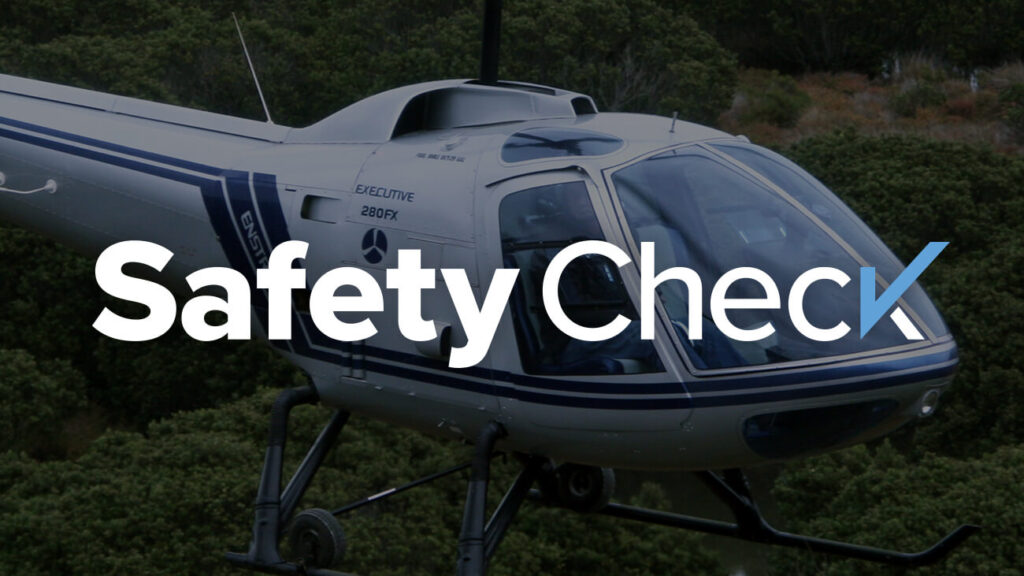Safety Check: Tweaking the Rotor RPM

Last week, I conducted five check rides over a four-day period. We flew in a Huges 269C, Guimball Cabri G-2, Enstrom 280FX, and an older Enstrom model F28A. While each aircraft operated flawlessly, I noticed many applicants struggled to maintain the rotor RPM in their respective helicopters.
The Guimball Cabri G-2 is equipped with a governor that does a nice job of maintaining the rotor RPM, but the other aircraft were either equipped with a correlator or nothing at all. In this edition of Safety Check, I would like to talk about best practices for maintaining rotor RPM in piston powered aircraft when there is no governor.
It is common for new pilots to overcorrect or “chase the needle.” As a pilot examiner, I find it difficult not to say anything when I clearly see the RPM is either too high or too low. If the applicant notices the abnormality and quickly corrects it, the check ride may continue. However, if the rotor RPM is below the green, and the applicant makes no effort to correct it, then I must intervene and take over the controls.
If you are a student preparing for your check ride, I would highly recommend reviewing Chapter 11 of the FAA’s Helicopter Flying Handbook titled, “Helicopter Emergencies and Hazards.” It is imperative you understand what to do in every emergency and hazard listed in this chapter. If your time is short, I want to highlight a few sections for you.
Let’s first focus on the section RPM Control and low Rotor RPM. This section details the importance of RPM control in the autorotation. Generally, pilots must simultaneously apply down collective, aft cyclic, and antitorque pedal inputs. This technique is essential to landing the helicopter safely after engine power failure. Many crash investigations note failure to follow this process as a contributing factor to the crash.
For specifics on how to safely enter autorotation, the handbook recommends you study the applicable Rotorcraft Flight Manual (RFM) for your helicopter model. If you haven’t practiced simulated engine failures lately, I encourage you to reserve time with your favorite CFI and become proficient again.
The next section I want to focus on is Low Rotor RPM and Rotor Stall. Rotor RPM is a critically important parameter for all helicopter operations. You’ll find your helicopter’s safe rotor RPM range printed on your aircraft’s tachometer and in its respective RFM. The helicopter is considered in a “low RPM situation” when the rotor RPM falls below the safe operating range. You’ll need to correct the rotor RPM condition immediately, or else the rotor will eventually stall.
During one of last week’s check rides, I asked one of the applicants to explain what a pilot should do to correct low rotor RPM. He responded, “It’s just like scooping ice cream.” At first, I was puzzled, but then he showed me what he meant, simultaneously lowering the collective and increasing the twist grip until the rotor RPM is back within the normal limits. I can now admit, it does kind of look like you are scooping ice cream with your left hand.
There is a reason why rotor low RPM is included in a chapter titled “Emergencies and Hazards.” Left uncorrected, the result can be catastrophic. Some students find it helpful to familiarize themselves with what the rotor sounds like inside that normal range. Then, when it changes pitch or loudness, they know to immediately check the tachometer and take corrective action.
For students and new pilots alike, maintaining rotor RPM may seem troublesome and difficult. Trust me though, through repetition and practice, it really can become second nature to the point you are tweaking the twist grip as a reflex.
As a final note, Enstrom Helicopter Corporation is working to make it easier for our pilots to maintain their RPM. At this year’s HAI HELI-EXPO, we announced the development of a new RPM governor for Enstrom piston helicopters. The new governor uses a digital controller and fast-acting servo motor to accurately control RPM.
Fly safe.

Randy is a dual rated Airline Transport Pilot with 13,000 flight hours in airplanes and helicopters. He has type ratings in the BE400 and CE500. Randy has been a rotorcraft Designated Pilot Examiner representing the Grand Rapids FSDO since 2014. Currently he works for Sweet Helicopters, a northern Indiana Part 135 air carrier operator and serves as the Airport Manager of the Goshen Municipal Airport.
About Enstrom Helicopter
From Rudy Enstrom’s early designs in 1943 to initial testing in a Michigan Quarry in 1957 to aircraft operating on six continents, Enstrom Helicopter Corporation has maintained a reputation for safety, value and performance. Based in Menominee, Michigan and proudly made in the United States, Enstrom has a rich history for design innovation. The goal is to provide helicopters to the customer’s exact specification and deliver support and maintenance worldwide.